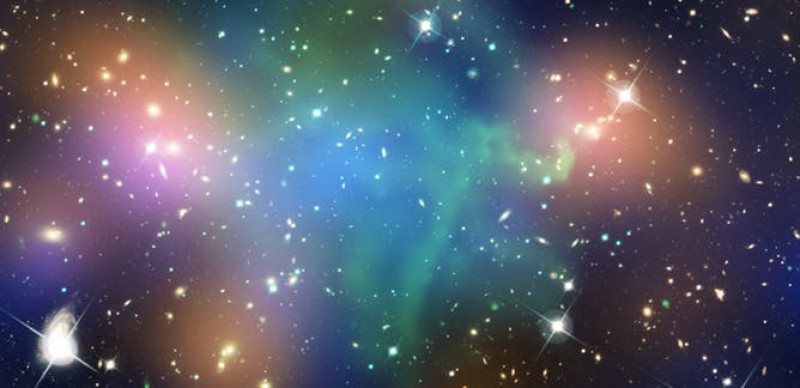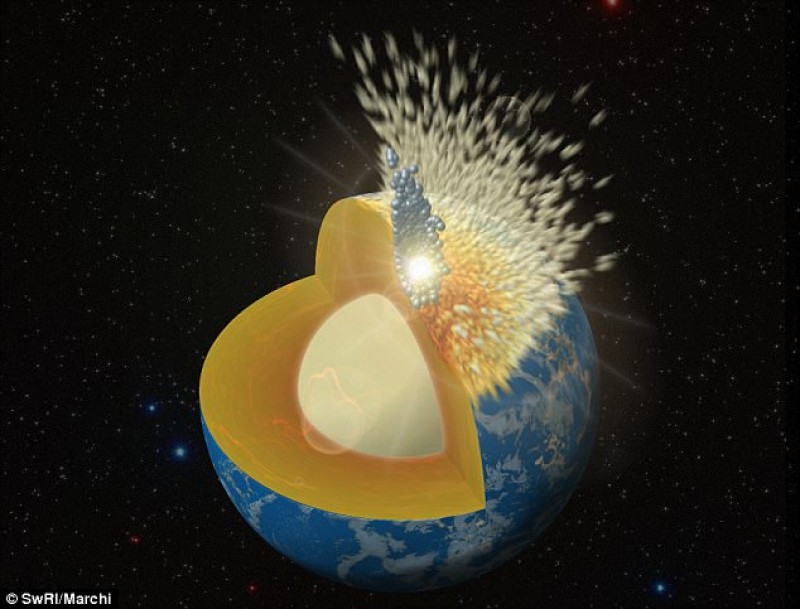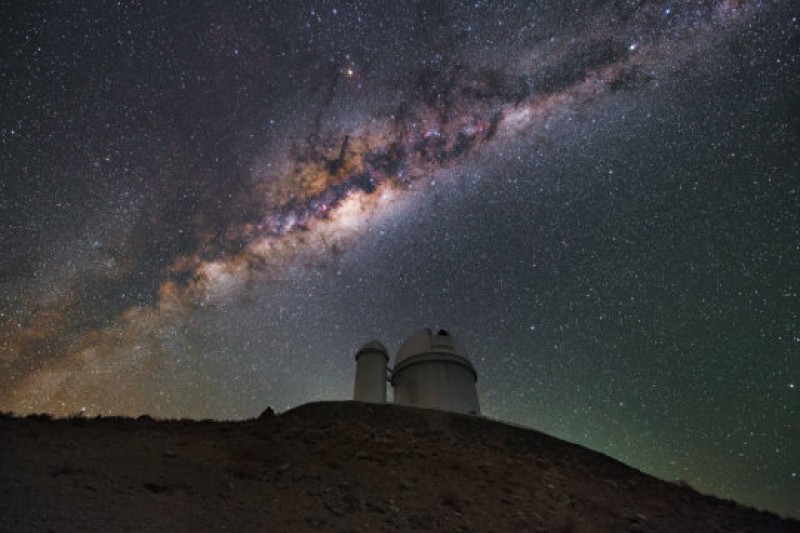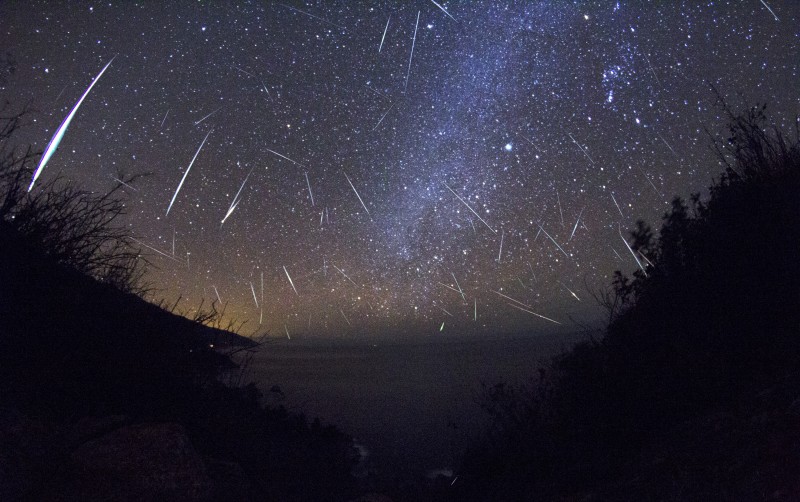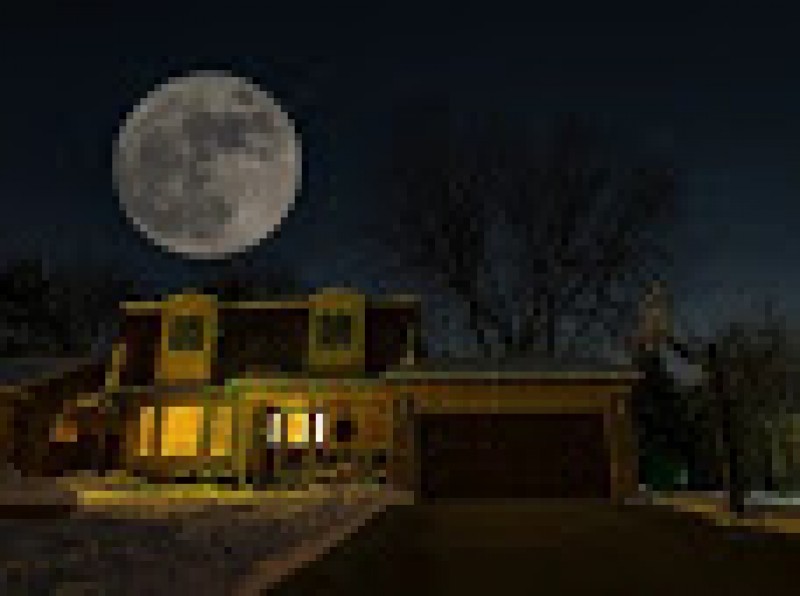Blog
Earth-Like Planet? Not So Fast — Scientist Says to Watch Your Words
Thursday, December 14th 2017 11:22 PM
The art of exoplanet detection is on the upswing, and scientists are perhaps at the cusp of a watershed moment — detecting life on other worlds.
To date, ground- and space-based telescopes have discovered more than 3,500 confirmed planets circling stars other than Earth's sun. And that number is destined to grow.
Indeed, the discovery of extrasolar planets that are about the same size and mass as Earth has opened the door to scientific debate about the probability that such worlds may be habitable.
Cautionary flags
Exoplanet finds over the last few years have sparked lots of news stories with terms such as "most habitable planet" or "Earth twin" in the headlines. However, the reality is that we currently have no way to quantitatively assess a planet's ability to support life, said Elizabeth Tasker, an associate professor in the Department of Solar System Sciences for the Japan Aerospace Exploration Agency and its Institute of Space and Astronautical Science....
Read More
Read More
Earth's Mysterious Hum Recorded Underwater for 1st Time
Tuesday, December 12th 2017 09:24 PM
Far from the blaring cacophony of cities, towns and suburbs, there are far quieter soundtracks to be found — the murmurs of wind rustling grasses, rushing waves tumbling onto beaches, the creaking of tree branches and trunks.
But underneath all that is yet another soundscape, a permanent, low-frequency drone produced by Earth itself, from the vibrations of ongoing, subtle seismic movements that are not earthquakes and are too small to be detected without special equipment.
Earth is "humming." You can't hear it, but it's ongoing. And now scientists have measured that persistent hum from the ocean floor, for the first time. [What's That Noise? 11 Strange and Mysterious Sounds on Earth & Beyond
Far from the blaring cacophony of cities, towns and suburbs, there are far quieter soundtracks to be found — the murmurs of wind rustling grasses, rushing waves tumbling onto beaches, the creaking of tree branches and trunks.
But underneath all that is yet another soundscape...
Read More
Read More
Night-Sky Light Pollution -- Satellite Imagery Confirms What We Already Know
Monday, December 11th 2017 10:37 PM
As streetlights the world over change from sodium lamps to LEDs, scientists wonder what this means for night skies. Scientists are finding that much of the financial savings derived from the improved energy efficiency of outdoor lighting is being wasted in the deployment of more lights. As a result, the projected large reduction in global energy consumption for outdoor lighting is not being realized. (Image Credit: International Dark-sky Association - IDA, NASA)
Five years of advanced satellite images show that there is more artificial light at night across the globe... And that light at night is getting brighter. The rate of growth is approximately two percent each year in both the amount of areas lit and in the radiance of the light.A Brightening WorldAn international team of scientists reported the results of a landmark study of global light pollution and the rise of light emitting diode (LED) outdoor lighting technology. The study finds both light pollution and energy co...
Read More
Read More
Does Dark Matter Exist? Bold New Study Offers Alternative Model
Thursday, December 7th 2017 07:00 PM
Dark matter is the elusive, invisible substance that appears to make up more than 80 percent of the total mass in the universe — far more than accounted for by the "regular" matter that makes up things like stars, planets and everything astronomers can directly observe. A new study makes the bold claim, however, that perhaps dark matter doesn't exist at all.
But scientists aren't convinced that the study holds water.
Hints of the existence of dark matter appeared as early as the 1930s, but the real discovery took place in 1978, when astrophysicist Vera Rubin concluded that the observable motions of galaxies couldn't be explained by the laws of Newtonian physics alone. Due to the speed of the galaxies' rotation, the stars on their edges would fly away if the only thing holding them in place were the visible matter
Rubin estimated that the galaxies must contain about six times more mass than what could be observed with existing instruments....
Read More
Read More
Early Earth Took a Heavy Beating After the Moon Was Formed
Thursday, December 7th 2017 06:47 PM
Earth may have been bruised by the impact of more than one moon-size object early in its life.
New simulations suggest that much of the material that crashed into our young planet may have been swallowed up by Earth's core or ricocheted back into space, requiring more collisions to leave the elemental signatures scientists see in the crust today.
The young solar system was a violent place. Planetesimals, the massive objects that didn't quite manage to grow into planets, wound up destroying themselves as they crashed into other objects during a period known as late accretion. These collisions left traces of highly siderophile elements — metals have an affinity for iron, such as gold, platinum and iridium— within our planet's mantle. [How the Moon Formed: 5 Wild Theories]
By measuring how much of these metals was mixed into the mantle, scientists estimated that about half a percent of the Earth's present mass came from colliding planetesim...
Read More
Read More
The sky this week for December 1 to 10
Wednesday, December 6th 2017 10:37 PM
Friday, December 1With the calendar turning to December, most people’s thoughts naturally turn to the onset of winter. As if on cue, the coldest season’s most conspicuous constellation now appears prominent in the evening sky. Orion the Hunter lies low in the east at 8 p.m. local time and climbs to its peak due south shortly after midnight. Look for three 2nd-magnitude stars in a short line that form the Hunter’s belt. The constellation’s brightest stars are ruddy Betelgeuse and blue-white Rigel.Saturday, December 2This week offers you a final chance to see Mercury and Saturn in the evening sky. Shortly after the Sun sets this evening, look low in the southwest for the planet pair. For observers at 40° north latitude, the two lie about 5° above the horizon 30 minutes after sundown. Binoculars will help you to find magnitude 0.2 Mercury and magnitude 0.5 Saturn in the twilight glow. The ringed planet lies just 3° to Mercury’s upper r...
Read More
Read More
Astronomy Calendar of Celestial Events for Calendar Year 2018
Wednesday, December 6th 2017 09:18 PM
January 1 - Mercury at Greatest Western Elongation. The planet Mercury reaches greatest western elongation of 22.7 degrees from the Sun. This is the best time to view Mercury since it will be at its highest point above the horizon in the morning sky. Look for the planet low in the eastern sky just before sunrise.
January 2 - Full Moon, Supermoon. The Moon will be located on the opposite side of the Earth as the Sun and its face will be will be fully illuminated. This phase occurs at 02:24 UTC. This full moon was known by early Native American tribes as the Full Wolf Moon because this was the time of year when hungry wolf packs howled outside their camps. This moon has also been know as the Old Moon and the Moon After Yule. This is also the first of two supermoons for 2018. The Moon will be at its closest approach to the Earth and may look slightly larger and brighter than usual.
January 3, 4 - Quadrantids Meteor Shower. The...
Read More
Read More
Two Super-Earths around red dwarf K2-18
Tuesday, December 5th 2017 09:14 PM
New research using data collected by the European Southern Observatory (ESO) has revealed that a little-known exoplanet called K2-18b could well be a scaled-up version of Earth.
Just as exciting, the same researchers also discovered for the first time that the planet has a neighbor.
"Being able to measure the mass and density of K2-18b was tremendous, but to discover a new exoplanet was lucky and equally exciting," says lead author Ryan Cloutier, a PhD student in U of T Scarborough's Centre for Planet Science, U of T's Department of Astronomy and Astrophysics, and Université de Montréal Institute for research on exoplanets (iREx).
Both planets orbit K2-18, a red-dwarf star located about 111 light years away in the constellation Leo. When the planet K2-18b was first discovered in 2015, it was found to be orbiting within the star's habitable zone, making it an ideal candidate to have liquid surface water, a key element in harbouring conditions for life as we...
Read More
Read More
Geminid Meteor Shower: Dust From an Asteroid
Thursday, November 30th 2017 11:25 PM
The Geminids usually put on a dazzling display that wows skywatchers around the world. Find out when, where and how to see this year's display, and check out amazing Geminid meteor photos by stargazers.
The Geminids are a meteor shower that happens every December. NASA says astronomers consider it one of the "best and most reliable" showers of the year, but the shower actually did not start occurring until very recently (in astronomical and human terms).
First reports of the shower emerged in the mid-1800s, but at the time there were only 10-20 meteors per hour. These days, it's more like 120 meteors at the peak.
Astronomers are puzzled about the number of meteors observed. While scientists have known for a generation about the source of the shower – an asteroid named 3200 Phaethon – the volume of the shower's meteors is strange given the observed amount of debris.
Clouded origins
The Geminids appear to come from the constel...
Read More
Read More
What Is a Supermoon?
Thursday, November 30th 2017 08:09 PM
A supermoon happens when the full moon coincides with the moon's closest approach to Earth in its orbit. Supermoons make the moon appear a little brighter and closer than normal, although the difference is hard to spot with the naked eye. The next supermoon (the only one of 2017) will happen on Dec. 3.
The term "supermoon" has only been used in the past 40 years, but it received a slew of attention in late 2016 when three supermoons occurred in a row. The supermoon of November 2016 was also the closest supermoon in 69 years, although a closer supermoon will rise in the 2030s.
Mike Boening, an urban photographer and photography instructor in Detroit, Michigan took this photo on Dec. 13, 2016.
Credit: Mike Boening
A supermoon happens when the full moon coincides with the moon's closest approach to Earth in its orbit. Supermoons make the moon appear a little brighter and closer than normal, although the difference is hard to spot with the naked eye. T...
Read More
Read More



